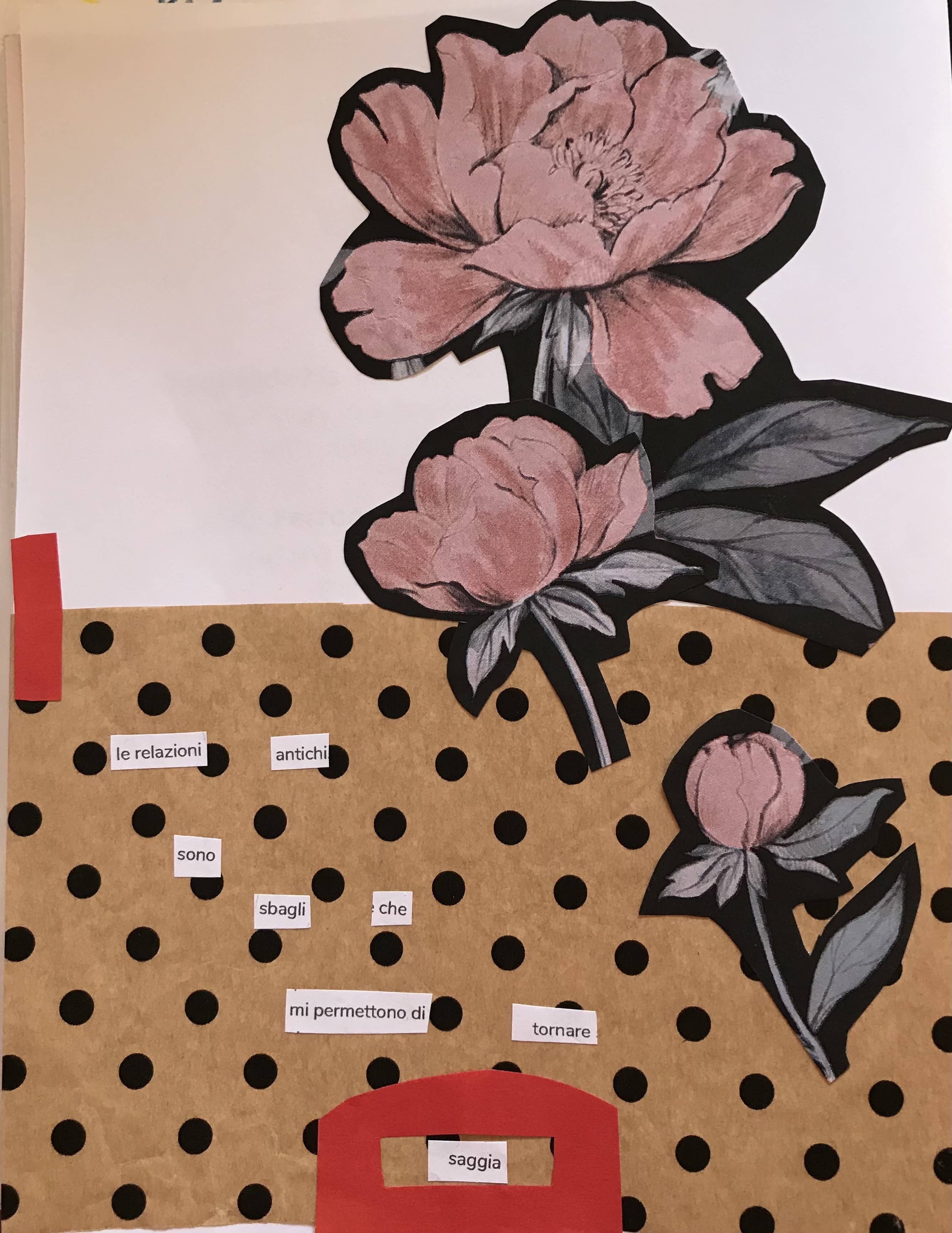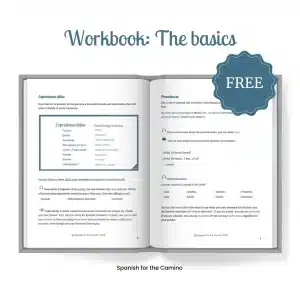Incorporate Spanish into your daily life |
You believe there are good reasons to learn Spanish before your next Camino de Santiago. You have the best intentions to learn some. Maybe you’ve even started, very enthusiastically… only to give up a few days later.
I’m demasiado viejo (too old). Or muy cansada (very tired). Or muy ocupado (very busy). Or muy… you can add any adjectives you like in there. Deep down, you know it’s just an excuse. I know. I’ve used them all! OK, maybe not the ‘too old’ one, but definitely all the others.
It could also be that you have the wrong ideas about learning a new language:
Maybe you believe you have to study for at least 1 hour every day in order to make any progress.
Or you think you must take traditional lessons, full of complex grammar explanations and repetitive exercises.
And then you start feeling overwhelmed, bored, stressed… And that’s why you give up. I know, I’ve done that too, not following the advice I give my own students.
You know the phrase ‘It’s your Camino’, right? You can apply this to learning Spanish too: there is no right or wrong way to learn Spanish (or any other language); you just have to find what works for you.
A tiny bit of grammar and a couple of exercises won’t do you any harm. But learning a language should be an enjoyable experience. You’re more likely to remember new words if you learn them while doing something you enjoy. If you enjoy doing grammar exercises, go for it! But there are other things you could be doing too.
You don’t need to take my word for it; this has been researched (an example). It has also been researched that consistency is quite important.
What does this mean?
Let’s say you spend 1h per week on your Spanish. In the long term, you will learn more if you spread that hour throughout the week (let’s say 10 minutes per day), than if you spend that hour on one day and then you don’t have any exposure to Spanish for the rest of the week.
So, to sum up, it’s OK to have fun while learning Spanish. In fact, it’s not just OK. This is what you should do.
And it’s also OK not to spend hours on it daily. It’s good to get as much exposure to the language as possible, but this doesn’t mean you should spend hours doing exercises that don’t bring you any joy. You can have Spanish in the background while you’re doing other things (here’s the Spanish for the Camino playlist on Spotify), you can watch Spanish TV for as long as you like… but remember to spend 10-15 minutes really focusing on the language.
Listening to music and watching TV are quite obvious, but there are many other things you could do to incorporate Spanish into your daily life and boost your learning.
Incorporate Spanish into your daily life |
8 ways to incorporate Spanish into your daily life
 Still on music and TV
Still on music and TV
Listening to Spanish música in the background is OK, and so is watching Spanish films and series. But there are things you can do to maximise the experience:
- Find the lyrics to your favourite songs and sing along, out loud (you’re more likely to remember things if you say them out loud, according to research).
- Keep pen and paper cerca (nearby) and write down any words you recognise. You can later check in a dictionary if you got them right. There are many free online dictionaries. I like to use WordReference.
- Take a very short clip of your favourite show and use it as a dictation exercise: listen as many times as you need and try to write everything down. Check with the Spanish subtitles how well you did.
Yep! Writing things down helps with your memory too.
 Use your hobbies
Use your hobbies
Cocinar (cooking), deportes (sports), crafts, fishing… or the Camino. It doesn’t matter what your hobby is. Find a website on your chosen topic in Spanish. Or a YouTube channel. Or a book… whatever you prefer. Games, such as la Oca, are great too. And enjoy!
 Use everyday stuff
Use everyday stuff
- Are you going to do your grocery shopping? Try writing your shopping list in Spanish. Does any of the items you bought have Spanish on their label? Read it and compare it to the English version.
- How many times a day do you check your phone? You can use it to your advantage. Go to your móvil‘s settings and change the language into Spanish. Every little helps.
 Get creative
Get creative
- Do you keep a diary or do journaling? Do some of it in Spanish. You don’t have to write long texts or complicated sentences. Start with a few words; it could be as simple as a list of things you did that day, such as ‘trabajo (work), compra (shopping), paseo (walk), cena (dinner)’. As you learn more, you can start creating your own simple sentences. Remember: they can be as long or short as you like and they don’t have to be perfect.
- Are you the creative type? Try things like blackout poetry or collage in Spanish. Blackout poetry (or found poetry) is a form of poetry where you select words that catch your attention from any printed text. To ‘get rid’ of the words you don’t want, you normally use a black marker, hence the name blackout poetry. I’ve only recently started doing this, as part of my Italian learning efforts and I am amazed by how much I’m learning. All you need is a page of text in Spanish, a marker and your creativity.


A couple of examples of blackout poetry and collage, so you can get a better idea of what I’m talking about.
How many of these are you going to try? You know what they say: the more the merrier. So, go on! Try them all and see which one suits you best. Or come up with your own ideas and share them with us in a comment. You never know who you might inspire.
Today’s Spanish words
Demasiado
Viejo
Muy
Cansada
Ocupado
Música
Cerca
Cocinar
Deportes
Trabajo
Compra
Paseo
For the pronunciation of cena, check Where did you stay?
Want more?
Make sure you don’t miss any posts or announcements by subscribing for free here. That way, when a new post is out, you will get it in your inbox. And… you get access to exclusive content too.



